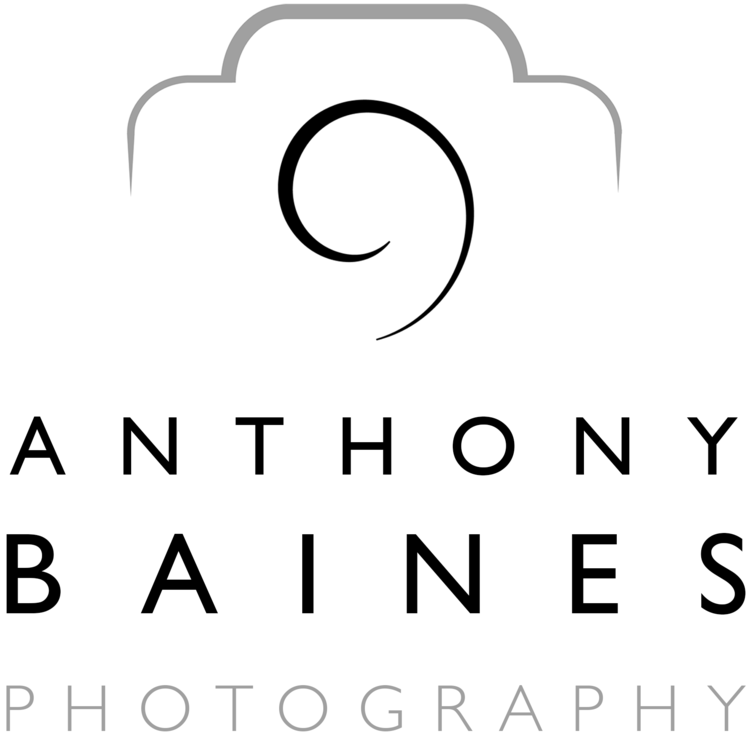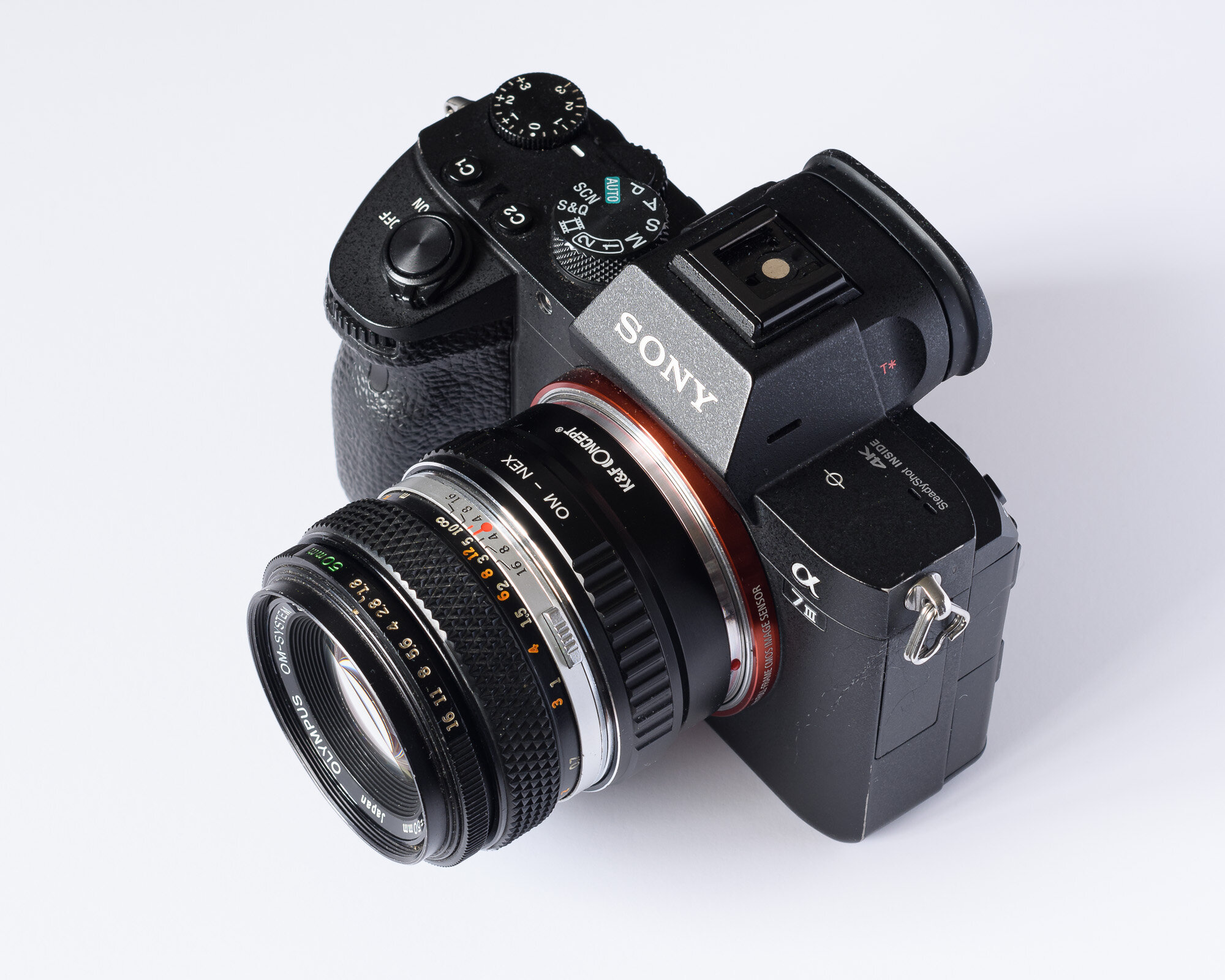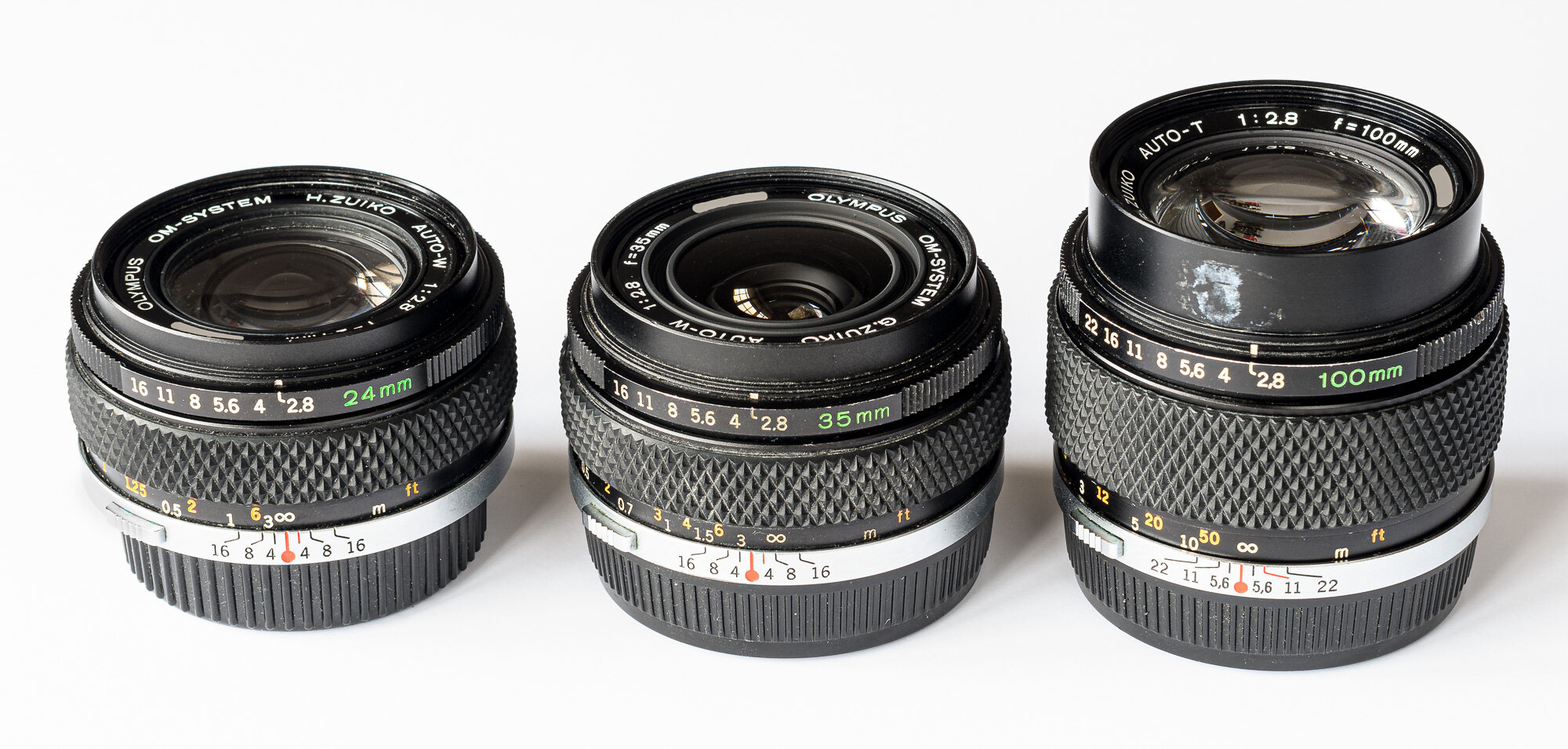I have been very curious to try out a Sony Alpha camera, and the opportunity came over the Christmas/New year period.
Lenses for Hire, where I regularly rent gear, had their annual get-everything-out offer on: this year it was four weeks rental for the price of one, an offer too good to miss. I booked a Sony A7 III and the 24-70mm f/2.8 GM lens.
I also decided it was a good opportunity to try something else as well: mounting my old Olympus OM Zuiko lenses on the Sony.
My OM2n was my companion from about 1981 (the exact date is lost in the mists of time) until I bought my first digital SLR in 2005. Over that time, I accumulated half a dozen Zuiko lenses. The first two, purchased at the same time as the camera body, were the 35mm f/2.8 and the 100mm f/2.8, both bought second hand in London when I was a student. Later came 24mm f/2.8, 28mm f/2, 50mm f/1.8, and 300mm f/4.5, mostly bought either on the used market or gifted by a friend who had fallen into the cult of Leica.
24mm, 35mm and 100mm lenses
Since 2005, these lenses had been sitting in a drawer, little used as I moved further and further away from using film. The F-mount of my Nikon DSLRs has always been too deep to mount my old OM lenses by using an adaptor, something I've always regretted.
Renting the A7III was a great opportunity to try out mounting them on a full-frame mirrorless camera. The depth of the Sony E mount is much less than that of the Olympus OM mount, so a simple metal tube can be used to adapt the old lenses to the new camera.
Trying out these lenses would purely be for fun, and a bit of nostalgia. Bear in mind these lenses are around 40 years old: since then, we have had extraordinary advances in computer-aided lens design, improvements to the optical glass, manufacturing of complex aspherical elements, new coatings, etc etc. Correspondingly, I would never expect these old OM lenses to provide an overall image quality to rival the latest designs native to the mirrorless system. My question was whether or not they were usable at all?
After a bit of looking around, I purchased a K&F Concepts OM-NEX adaptor. It turned out to be well made, with quite a snug fit at both ends, especially on the OM lens. Infinity focusing was spot on with each lens.
Having mounted one of the lenses to try out, I found it worked perfectly, first time. There is no electrical connection between the lens (which is, in any case, all mechanical) and the camera, so there is no aperture display in the finder or corresponding data in the EXIF. But, the camera can be used in A (aperture priority mode) or M (manual) modes. You can set the aperture using the ring on the lens, and, in A mode, the camera will choose the shutter speed to go with whatever ISO is set. Alternatively, set the camera to M, set aperture (on the lens) and shutter speed (on the camera), and have auto-ISO selected so that the camera determines the correct exposure from the ISO value. I mostly used the camera in M that way, because with a modern mirrorless full-frame camera the ISO value in daylight is the next thing to irrelevant; I simply want to control aperture and shutter speed to get the look I am after for the final picture.
I managed to use each of the lenses reasonably extensively, taking them, one at a time, out on my daily exercise walks, as well as photographing members of my family, and around the house and garden. We are still in Covid lockdown as I write, so there was no opportunity to get out and about, or photograph other people much.
I won't put any of the resulting pictures in this post - I'll post pictures from each of the individual lenses over the next few days.
As a spoiler - the bottom line is that each of these worked surprisingly well. Bearing in mind that they are all around 40 years old, and most were not new when I got them, I'm knocked out by the quality of the images. They are all nicely sharp, with very little distortion, and any fringing is well controlled. From the earliest days, I was aware that when facing into the light, the OM lenses could yield images that were hazy around the edges of dark areas next to bright ones; these lenses generally behaved as expected in that regard.
One further point is that these old manual focus lenses work every bit as well, and, honestly better, on a modern mirrorless body than on a film camera. On my OM2n there was a split prism focus in the centre of the finder, which meant that for an off-centre subject it was necessary to recompose after focussing. By setting up focus peaking, where the in-focus area is highlighted, the need to focus and recompose is eliminated.
The hyperfocal distance focusing scale on my 28mm lens. Set the aperture ring (top of picture) to f/8. Position the infinity (∞) focus point above 8 on the lower scale and everything will be acceptably sharp between about 2m and the far distance. Set it, forget it, and concentrate on pictures.
The lenses have a distance-aperture focusing scale for hyperfocal focusing as well. One of the losses when going to digital was that this scale was omitted (or made uselessly small) on the new lenses. Hyperfocal focusing was a standard method in street photography: set the aperture to f/8 and the focus to hyperfocal and forget about anything other than taking pictures*. (Alternatively, set the near and far points to bracket where you expect your subject to be, and you’ll be focussed within that zone.) The Olympus distance-aperture focusing scale has always been exemplary as far as I am concerned.
It was pure fun using these old lenses on a new camera. I certainly didn't expect image quality to rival modern lenses. But, by and large, what they produce looks great. For anything where you have a once-in-a-lifetime opportunity to get a particular picture, of course, you'll use a modern lens. But for, say, a day out doing street photography in London (if such days ever come back) I think it would be great fun to try one-lens-one-camera with any of the wider lenses.
* What is the secret of successful photography? f/8 and be there


